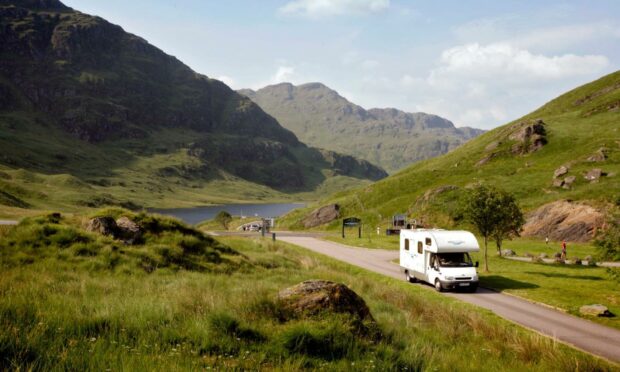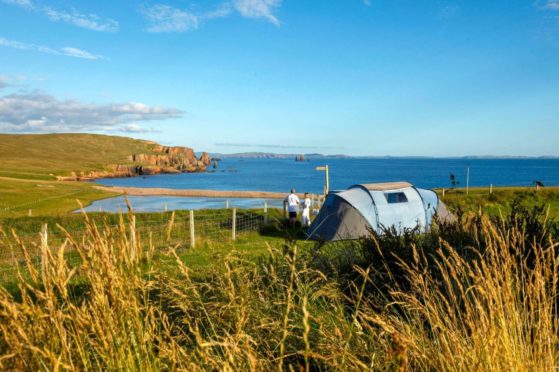More than £5.8 million of funding is to be spent on a number of Scotland’s popular visitor destinations and nature hotspots.
The recovery funding from the Scottish Tourism Emergency Response Group (STERG) will be used to improve infrastructures and create jobs across the country.
STERG has created three funds to support tourism recovery following the unprecedented Covid pandemic, including the Rural Tourism Infrastructure Fund (RTIF).
The fund will be managed by VisitScotland on behalf of the Scottish Government and will help to improve the visitor experience in rural locations facing pressure due to higher footfall.
The applicants from local and National Park authorities include Point of Ness in Orkney, Tobermory in Argyll and Bute and Aden in Aberdeenshire.
Improving the visitor experience
Funding will be used to improve parking and accessibility for cars, coaches and campers with charging points for electric vehicles. Work will also be completed on footpaths, public toilets and chemical waste disposal points.
Malcolm Roughead, chief executive of VisitScotland, said: “The STERG tourism recovery funding is crucial in helping improve vital infrastructure and the overall visitor experience as part of responsible tourism work being undertaken by VisitScotland, NatureScot and our partners across the country.
“Over the last three years, the RTIF has played an important role in improving the visitor experience, be it car parking, toilets or footpaths, as we want people to have a must visit-must return experience, so I am delighted to see another 11 projects receiving funding.
“We all need to play our part in being responsible visitors and improvement works like these are crucial to ensuring our visitor destinations remain sustainable for years to come.
“Tourism is a force for good and if managed responsibly, sustains communities in every corner of Scotland, creates jobs, tackles depopulation and improves the wellbeing of everyone who experiences it.”
Developing positive solutions
The Green Recovery Better Places Fund of £3.1m from NatureScot will be spent across 120 projects to improve busy nature destinations in Scotland. As a part of the project, responsible behaviour while enjoying the outdoors will be promoted.
The fund has already created more than 60 new jobs, including 47 new seasonal ranger posts to help manage sites, and 35 projects have been completed. A further 92 projects are underway in preparation of the upcoming season.
Following the easing of lockdown last summer, the number of visitors to Scotland’s outdoor spaces increased greatly. This resulted in more littering, parking issues, wildfires, toileting and general damage to nature.
NatureScot has launched the fund to try and tackle some of these issues throughout Scotland, including Skye, Barra, Islay and the popular North Coast 500.
Francesca Osowska, chief executive of NatureScot, said: “It is fantastic to see so many communities, charities, local authorities and NGOs eager to take pro-active action to tackle the issues and develop positive solutions to managing visitors at popular nature destinations.
“Investing in nature, including visitor management, is a key part of a green recovery: providing jobs; addressing nature loss; and tackling climate change.
“Our Better Places Green Recovery Fund is improving visitor services and infrastructure, so that we can all access and enjoy nature easily and safely.”
Investments are crucial
It is intended to support development plans submitted by different councils and will benefit areas in Orkney and the Highlands, including the Cairngorms National Park.
Tourism Minister Ivan McKee said the funds are vital to support rural communities while more people are choosing to staycation in Scotland’s countryside.
He added: “I’m delighted to see that through our funding and work with NatureScot and VisitScotland, as well as local communities across the country, we can ensure that we can welcome more visitors to our unique natural environment without damaging what makes it so special.
“Scotland has world-leading legislation giving people rights to access our countryside but it’s important that these are exercised responsibly and with respect for others, for wildlife and for the land itself.
“Investing in visitor management and supporting our rural communities is a crucial part of sustainable tourism growth.”

